The Evolution of Aircraft Liveries: A Symbol of Airline Identity
July 22,2025
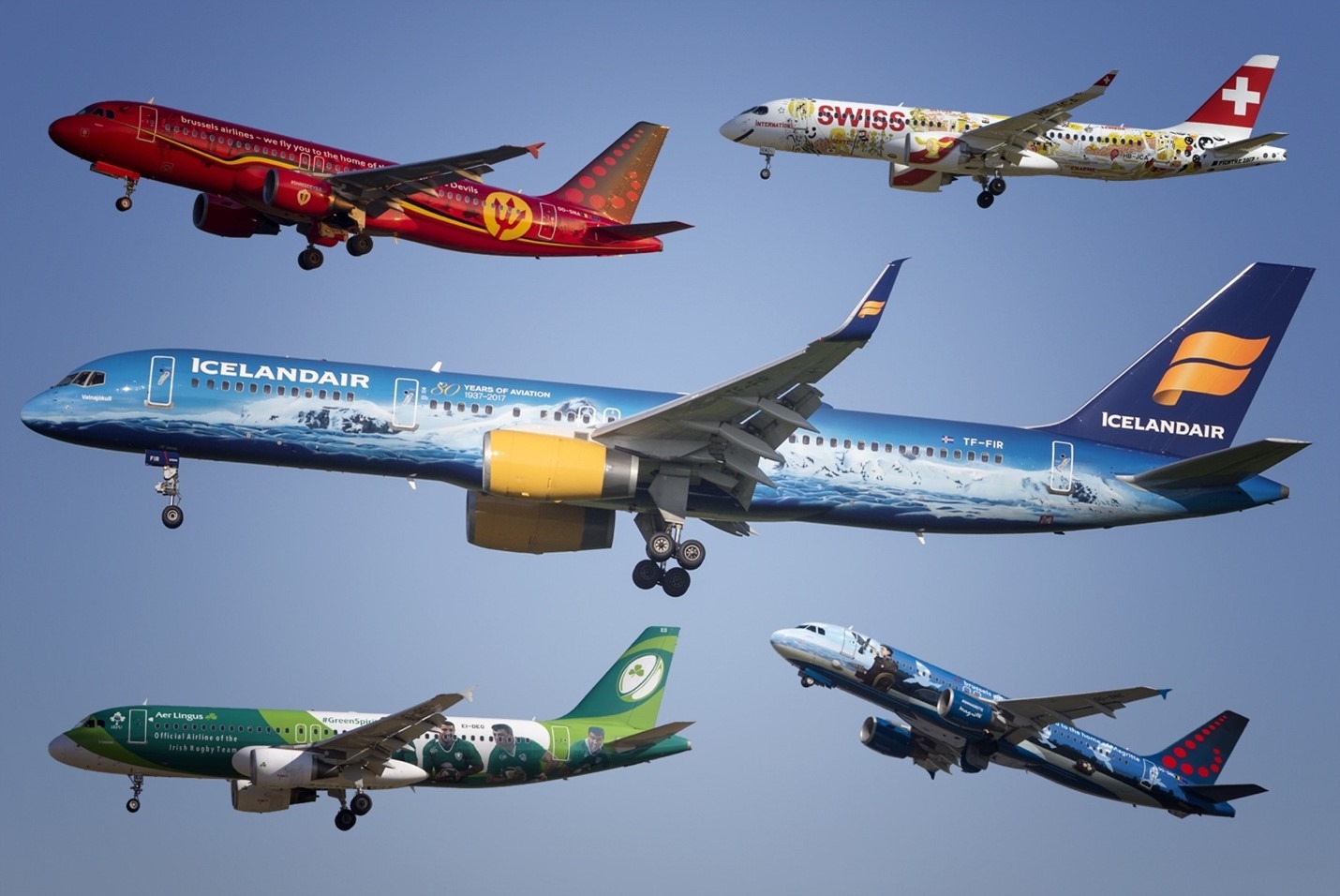
Aircraft Livery is the Airline lingo for the painting of the aircraft and its overall look. Airlines are some of the most recognised brands in the World and there is no better billboard for them than the fuselage of their own Aircraft.
Airlines paint select aircrafts in special insignia comprising colour, graphic and typographical identifiers. The Theme consisted mainly of Commemorative, Heritage or Retro, Airlines very own Logo, Marketing or Regional or Airline Alliance themes. An Airlines livery makes their plane easily identifiable whether in Airport or in the Air. The term Livery is an adaptation of the word livery , the uniform style of clothing worn by servants of wealthy families and Government representatives of British Empire until early/mid 20th Century.
The first reported Aircraft painting was in the year 1913 by an Italian Boat Plane which sported a sea monster on its fuselage. In the early years Aircraft livery was all about National Flags and symbols ; A sign of Patriotism and Pride. All that changed with the liberalization of Aviation Industry.
After the World War II Aircrafts sported gleaming metal look, which was called the BARE METAL LIVERY, leaving the fuselage Bland with a few stickers of the Airline Emblem or Insignia. Usually the Tail fin bore the emblem of the Airline. The fuselage treated with special primers to retain the gleaming look and also to keep erosion of the metal at bay.
Bare Metal Livery gave way to CHEATLINE LIVERY, which is a decorative horizontal stripe of painting applied to the sides of Aircraft, above or below the windows. Cheatline could be either single or double line. Often, the cheatline merged with the Airlines logo in the Tail Fin.
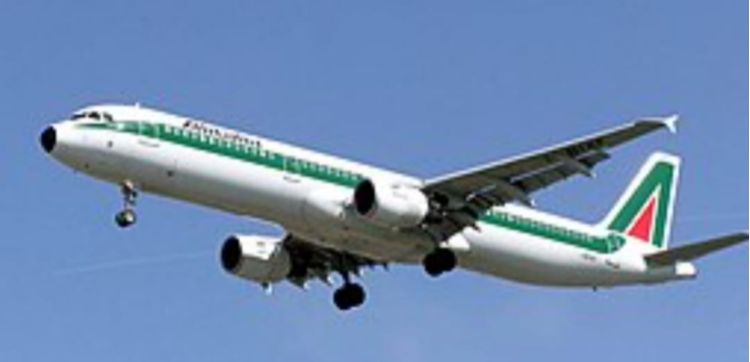
The cheatline extending up to the tailfin created a HOCKEYSTICK LIVERY.
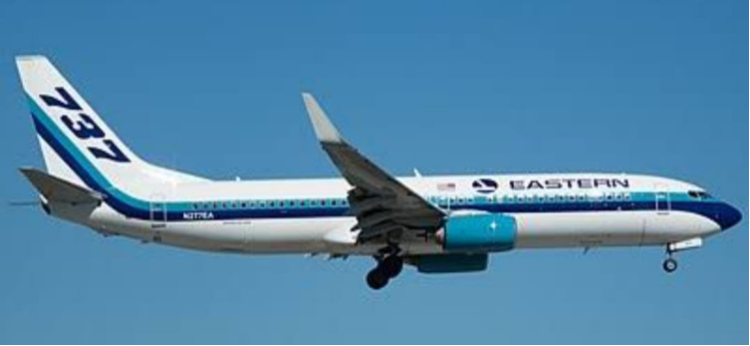
Braniff International Airways painted the entire aircraft fuselage to create ALLOVER COLOR LIVERY IN 1965. Several other airlines followed this type of Livery in the year 1965.
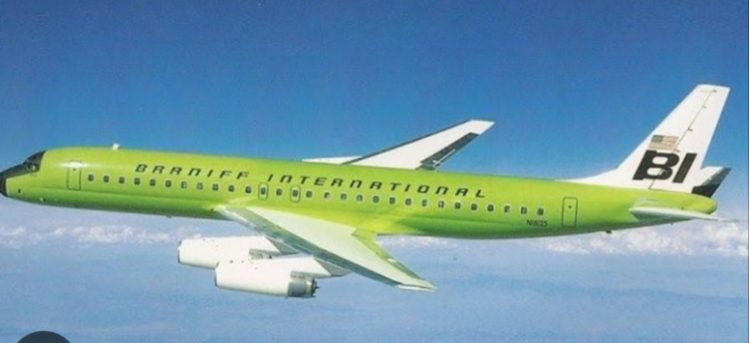
During 1970,s an inverted Allover color Livery emerged. The fuselage was painted predominantly in White. This was known as the EUROWHITE LIVERY. This livery was chosen by many airlines mainly because the white paint was cheaper and the aircraft when sold/ leased could easily be changed into the livery of the buyers choice. Another reason was that White colour was easily picked up by birds in the air (than bright colours)which helps them to avoid flocking into the aircraft; a study in Human-wildlife interaction revealed. And the colour white is known to reflect sunlight and is likely to keep the aircraft cabin cooler than dark colours.
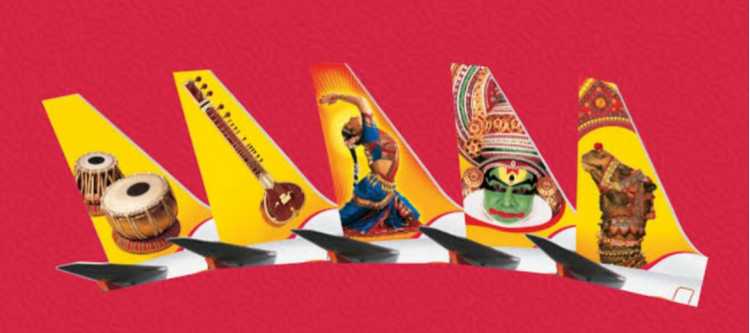
JELLYBEAN Livery, which involves multiple alternative colorways on entire aircraft or its parts. Air India Express livery is unique as each tail portrays the beauty and diversity of India’s rich culture and heritage.
Some funny,zany Aircraft Liveries…
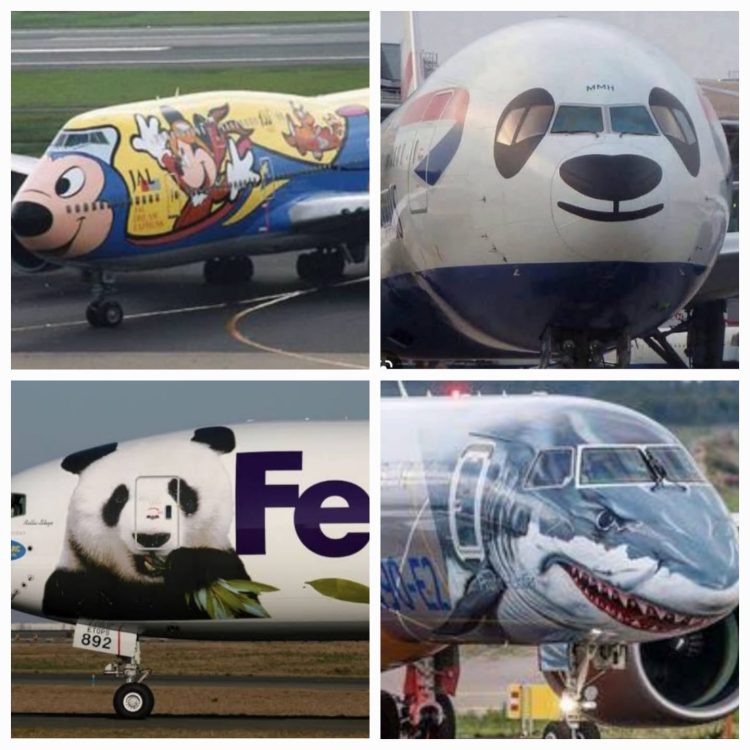
An Air Asia aircraft displaying the image of Rajini on the day of release of the Movie Kabali; a clever marketing ploy used by the producers..
The process and cost of redoing a livery can be very tricky and expensive. Usually, major Airlines go for repaint between 7 to 10 years. Changing of Airline Brand, Mergers, Leasing of aircraft and advertisement endorsements can also necessitate a change of Livery.
The Old Paint is removed with a chemical spray; as painting on an existing livery would add to the Aircraft Weight and thereby reduce its payload resulting in loss of Revenue. Painting adds about 541 kg to an Airbus A380 Aircraft. After removal of the existing livery a primer is applied and later the background colour is applied. The intricate art work, details of colour etc comes on top of the background paint. Art and design normally is stencilled or stickers are applied.
Epoxy or Enamel paints are preferred. Epoxy is a polyurethane paint that adheres well to airplane surfaces. It doesn’t dry as hard as enamel; therefore it doesn’t chip or become brittle overtime. Epoxy has a high resistance to chemicals and doesn’t fade, or break down easily.
Enamel offers two main advantages over epoxy; it is a lower cost option and it is not as dangerous as epoxy because it doesn’t give off certain gases when being sprayed. The cost of a paint job is around $100,000 – $200,000. A complex design will cost a little more.
The Airline Management sure has to think twice before rebranding or changing their Livery.